Panther Pink Six Pack Challenger T/A
STREET VERSION OF THE NEW DODGE CHALLENGER TRANS-AM RACER
It was February 20, 1970, when Dodge made this announcement in their Bulletin #0-3:
Trans-Am sports car racing is the fastest growing segment of automobile racing today. In keeping with this overwhelming public interest, the Dodge Division will field a factory sponsored Trans-Am racing team for the 1970 season. Youthful racing star Sam Posey will campaign a Dodge Challenger in the Sports Car Club of America’s Trans-Am Series (SCCA).
Dealers were instructed to order their “street” Challenger T/A production cars by specifying “JH23” model code and sales code “A53” (Trans-Am Package) and printing the words “Trans-Am” in large block letters across the top of the order form.
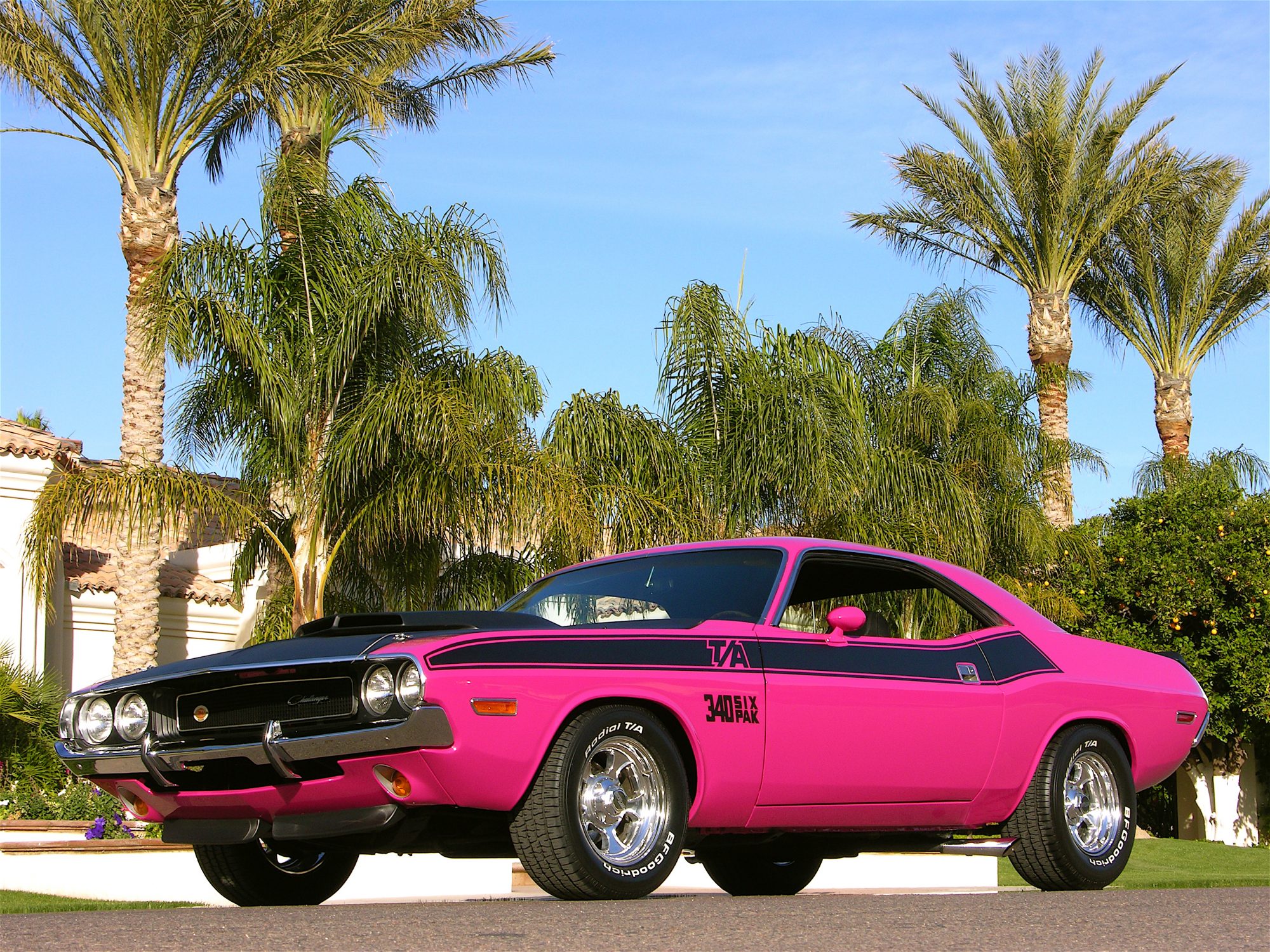
“Panther Pink” was a new, shockingly bright, special extra-cost “FM3” High Impact color for 1970! The Challenger T/A was a very special edition, and to further add individuality and identification to the road-race-inspired production car, a pair of longitudinal matte black stripes adorned the sides, running on the front fenders, doors and rear quarter-panel, terminating at the forward edge of the C-post. “T/A” lettering was inscribed in 5-inch sized lettering on the front fenders. Directly below, “340 Six Pak” bold markings were featured, ensuring nobody would miss the fact that this is a truly special car, like no other in the Dodge lineup, especially in this color!
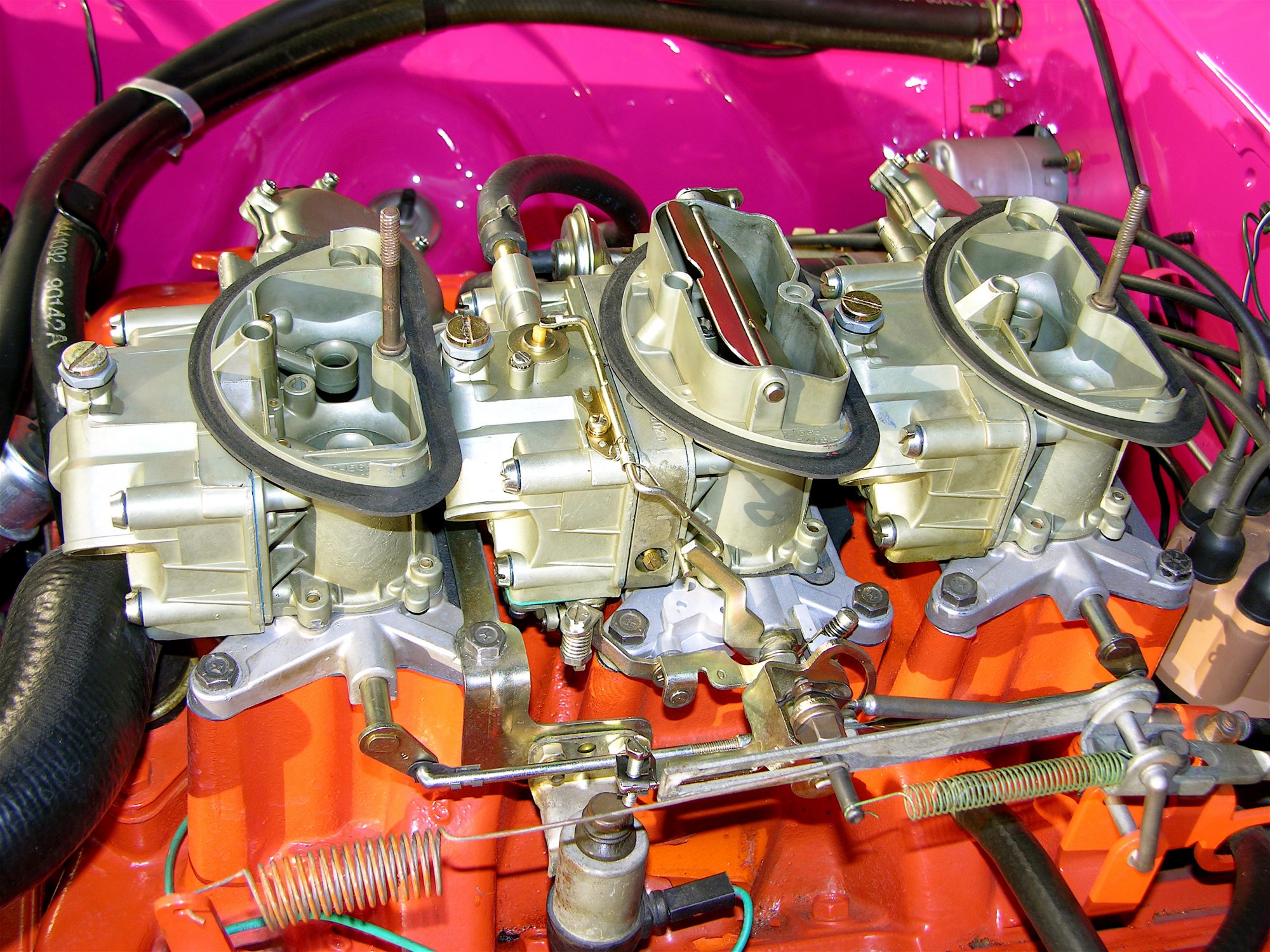
The street Challenger T/A was special for a number of reasons. First and foremost, the engine was not just the standard 340-cid V8, but a uniquely equipped version that sported numerous performance improvements. The block itself was a stress-relieved, one-off casting with extra material added to the main bearing bulkhead area to accommodate the fitting of four-bolt mains, plus the lower pan rails also received attention in the way of added material to stiffen the lower end of the engine. These beefed-up “T/A” blocks weighed about 20 pounds more than a standard 340 block and can be identified by the “TA” letters that precede the “340” markings on the casting number (located on the driver’s side of the block near the location of the starter). It should be noted the street T/A versions came with 2-bolt mains; however, the extra material was there for engine shops to convert to the stronger 4-bolt design.
Cylinder heads on T/A cars were upgraded with larger intake port cross-sections (for additional porting capabilities), longer pushrods (with special ends to fit the adjustable T/A-specific offset rocker arms that provide a better pushrod angle) and the rocker shafts had additional lubrication grooves to accommodate the revised design. The snap rings in the (hydraulic) lifters were also of heavy-duty design.
Because of these changes, these T/A heads could have their ports enlarged for increased airflow by an engine builder. Also for improved engine breathing, the camshaft profile was changed for the 340 T/A powerplant, as lift was .429 (I) and .444 (E), with 268-degrees duration (I) and 276-degrees duration (E). 10.5:1 compression ratio was part of the T/A powerplant.
Perched atop the specially developed block and heads was another treat specific to this engine, an aluminum Edelbrock hi-rise intake manifold that mounted a trio of Holley 2300-series dual-throat carburetors totaling some 1,210 total cfm (cubic feet per minute). The center carb used an accelerator pump, with the front/rear carbs operated via vacuum diaphragms. This triple carburetion system, its design borrowed directly from the big-brother 440 Six Pack big block engine, worked fabulous on the hopped-up small block engine package (the vacuum-operated mechanisms on the end carbs prevented bogging), plus was a visual thing of beauty in appearance when the hood was opened.
SPECIAL SIDE EXHAUSTS
Included in the Challenger T/A modifications was a unique abbreviated exhaust system which saw the removal of the standard tailpipes, the addition of new two-pass mufflers which featured the inlet and outlet on the same end, which allowed for low restriction side exhausts that exited under the side sills, near the rear wheel openings.
Factory ratings for the engine were listed (conservatively) at 290 hp at 5,000 rpm, with torque at 345 lb.-ft. at 3,450 rpm. The 340-6 was a powerhouse engine even in completely stock form.
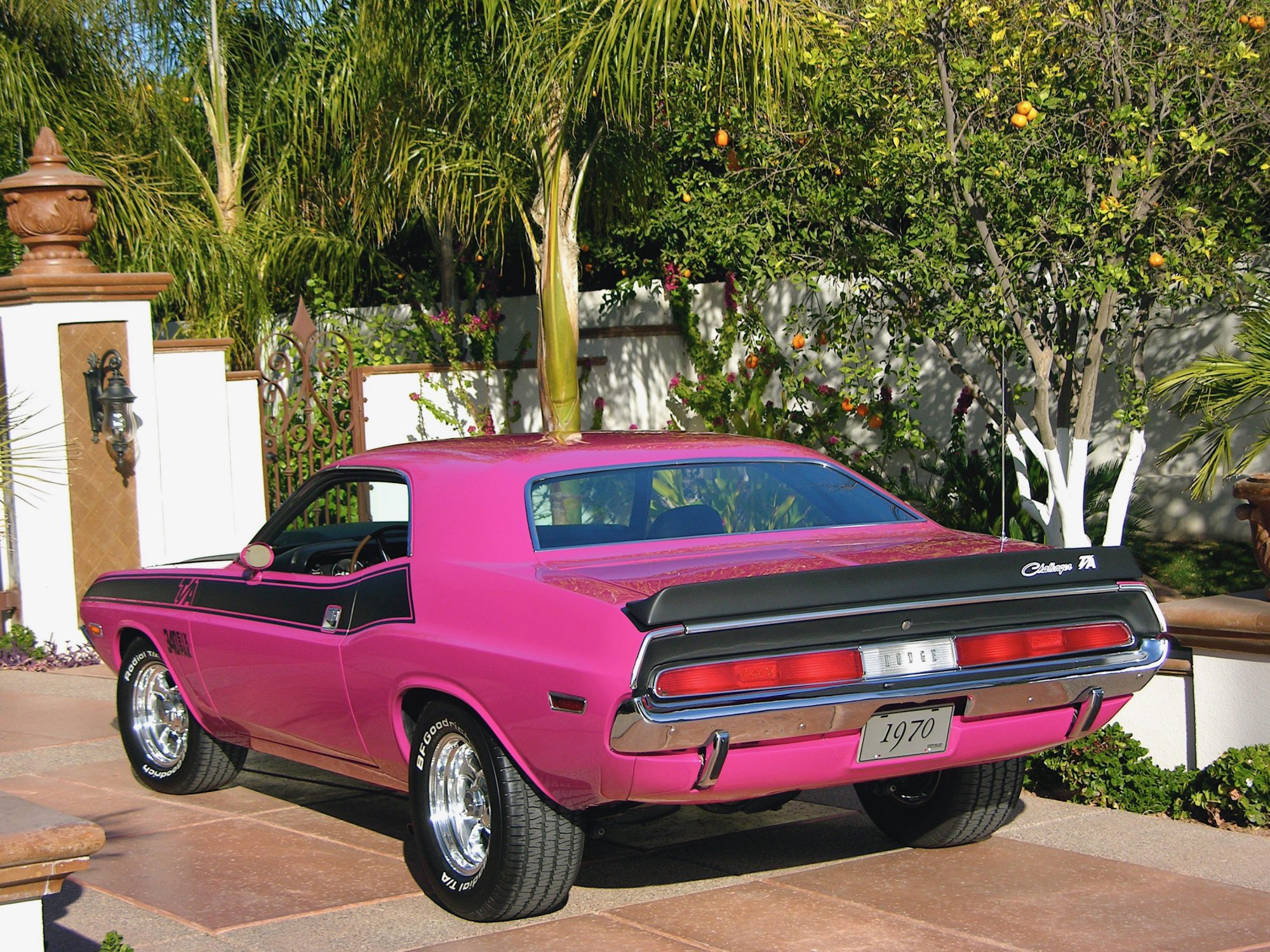
The rear spoiler on the T/A was a one-piece fiberglass unit and it was designed for racetrack, said to provide some 125 lbs. of rear downforce. It’s just one of the many items that Dodge gave the car to make it separate and unique from the other “Scat Pack” cars in their product lineup for 1970.
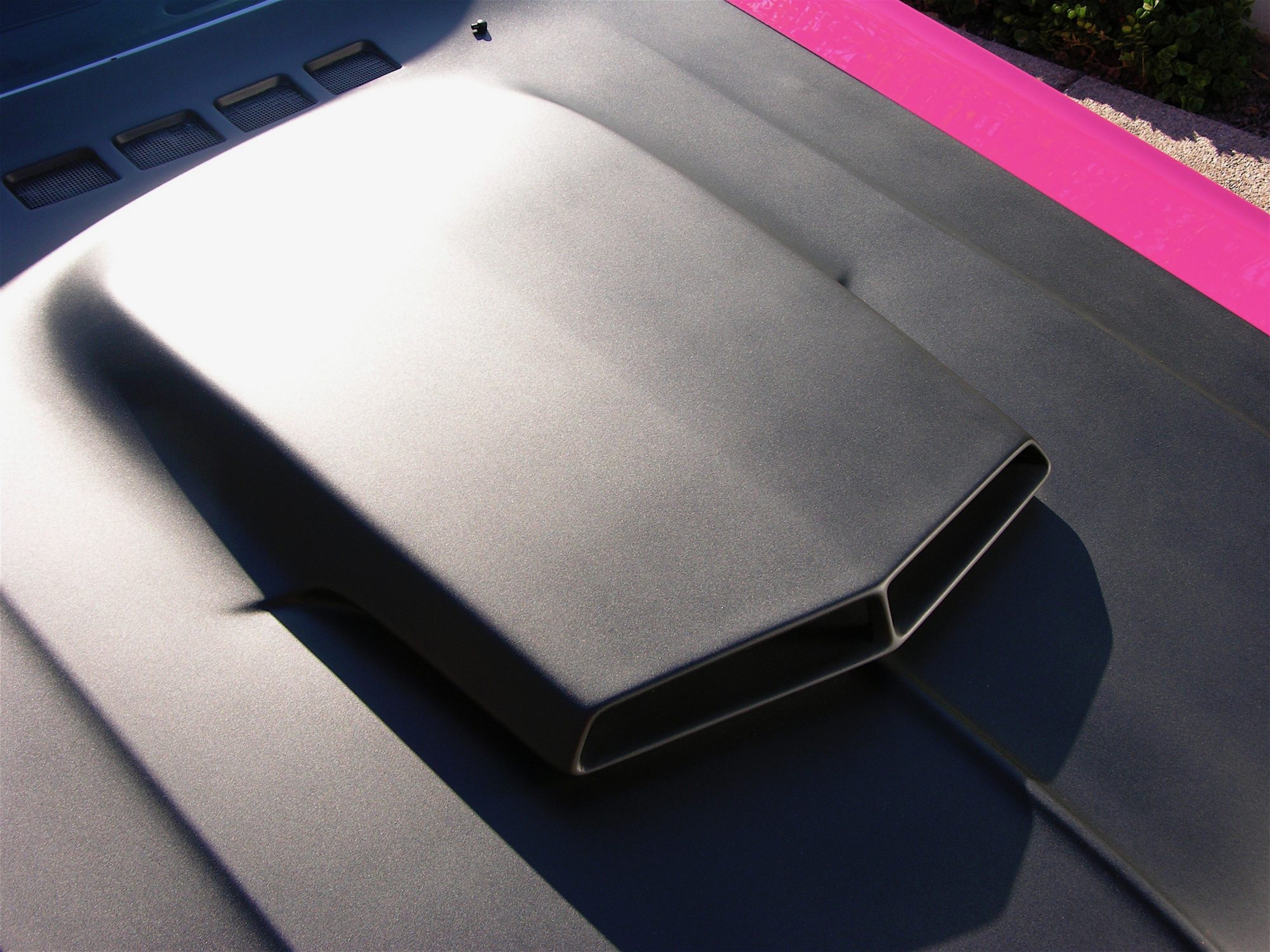
“Scat Scoop” is what Dodge Public Relations called the elevated hood scoop that appeared as standard equipment on Challenger T/A cars. The entire hood, coded N94, was lightweight fiberglass (finished in a flat black hue) and came with twin hood pins and lighter hood springs to deal with the decreased weight. Designed to force fresh air into the engine, this scoop incorporated jet aircraft technology with its “boundary layer” style, which differed from conventional hood scoop designs.
BEEFED-UP SUSPENSION
To help make the Challenger T/A more of a road handler, staggered raised white lettered tires were added (E60 x 15 front, G60 x 15 rear, two sizes larger) and 15 x 7 wheels as standard equipment. Up front, large diameter (0.92-inch) HEMI® engine-spec torsion bars, large diameter sway bar and HD shocks were fitted, and rear suspension components consisted of HD shock and springs, plus an oversized sway bar, and these cars sat up in the rear slightly higher than a HEMI engine-powered Challenger. Why? Because the camber of the rear springs was increased, providing the needed ground clearance for the trumpet-type tipped side exhausts.
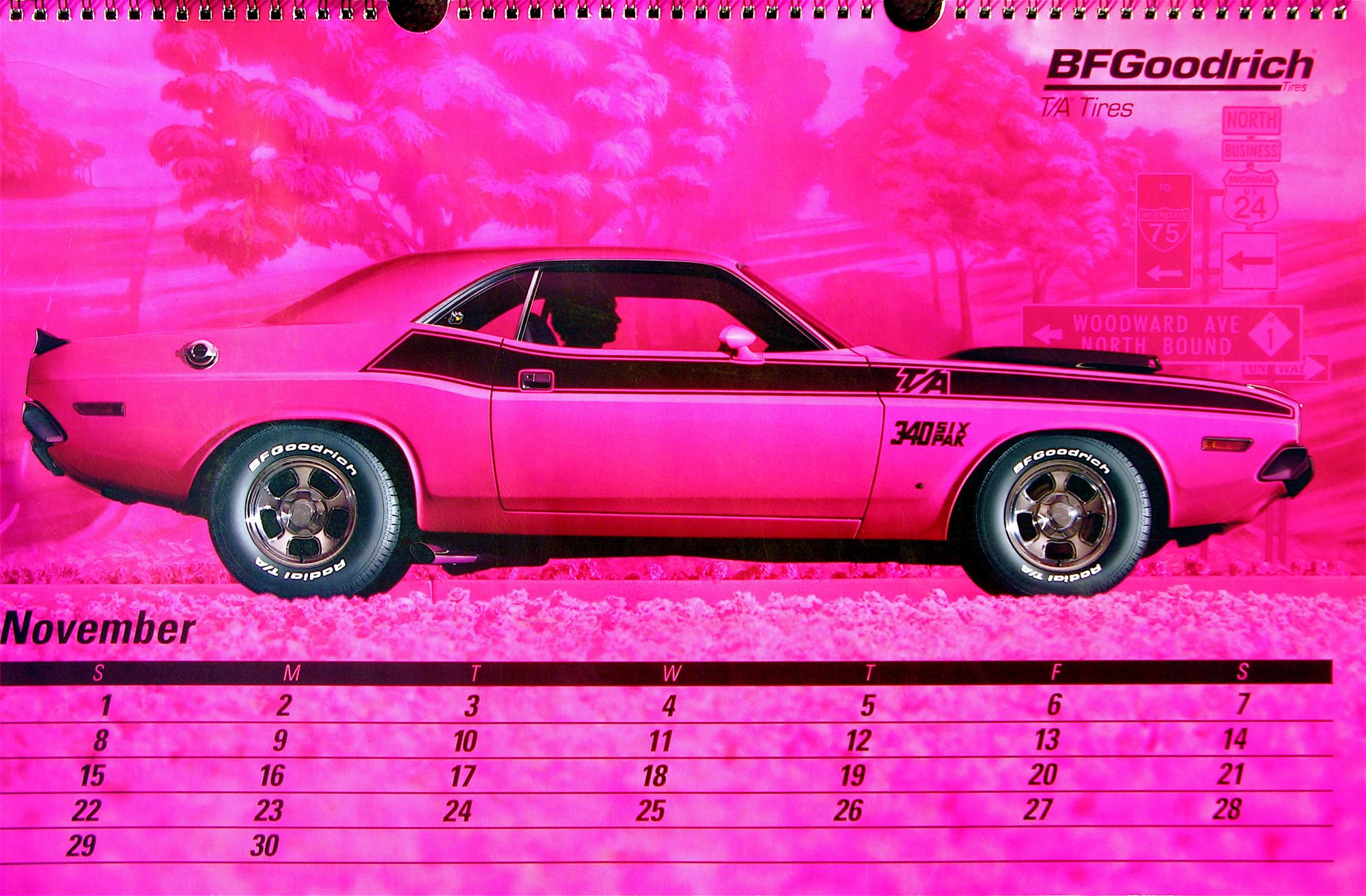
It’s a numbers-matching, fantastically detailed example, and one that was factory delivered in a “high impact” color. It was so desirable that BFGoodrich chose the car to promote their Radial T/A tires some years back in the “Kick’n Asphalt” national advertising campaign. Boyd Coddington five-spoke wheels were fitted.
THE AUTOMOTIVE MEDIA CHIMED IN
Here’s what the car magazines had to say about the 1970 Dodge Challenger T/A:
Road tester Jim McCraw from the July 1970 issue of Super Stock Magazine: “Among our first impressions of the test car was the really good sound of the engine in operation. Whether it was the jet-plane-like whining created by the multiple carburetion, the sound of the valve train, the abbreviated side-exit exhaust system, or all three together, we still don’t know; what we do know is that the little engine exudes horsepower and authority wherever it goes.”
John Christy, Technical Editor, in the October, 1970 issue of Rod & Custom Magazine: “Conservatively (very conservatively) rated at 290 hp at 5000 rpm, this new version of the 340 would seem to have lost a mere 40 horsepower between the flywheel and the dyno rollers which means that the clutch must have welded itself solidly and the rear tires and the dyno rollers suddenly developed intermeshed cogs. In other words we don’t tend to believe that power rating. We didn’t believe it when we first planted a tentative foot on the throttle and we believe it less after a session at Geraghty Automotive.”
THE COLOR PINK AS IN FM3
If you dig the Panther Pink hue, as well as Plymouth’s “Moulin Rouge” matching color, check out other Mopar® vehicles featured with this High-Impact special paint treatment.
Author: James Maxwell

0 Comments